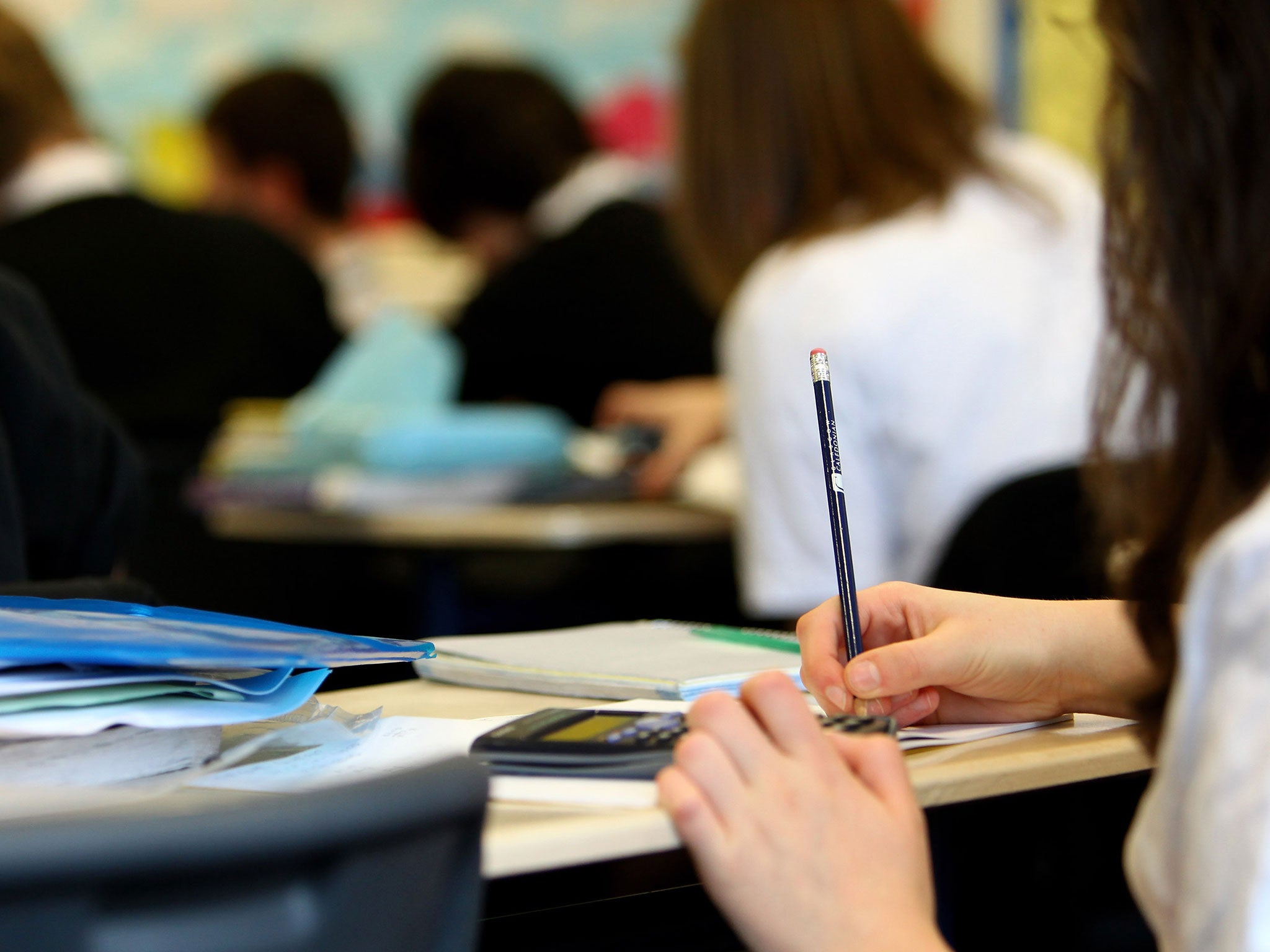Nearly 100,000 children being taught in classes of over 30

Your support helps us to tell the story
From reproductive rights to climate change to Big Tech, The Independent is on the ground when the story is developing. Whether it's investigating the financials of Elon Musk's pro-Trump PAC or producing our latest documentary, 'The A Word', which shines a light on the American women fighting for reproductive rights, we know how important it is to parse out the facts from the messaging.
At such a critical moment in US history, we need reporters on the ground. Your donation allows us to keep sending journalists to speak to both sides of the story.
The Independent is trusted by Americans across the entire political spectrum. And unlike many other quality news outlets, we choose not to lock Americans out of our reporting and analysis with paywalls. We believe quality journalism should be available to everyone, paid for by those who can afford it.
Your support makes all the difference.The number of primary school children being taught in oversized classes of more than 30 pupils has dramatically increased in the last year, new figures reveal.
Statistics from the Department of Education show that almost 100,000 five to seven-year-olds are now being taught in classes above the legal limit.
The data also shows that the number of “unlawfully” large infant classes has doubled in the last 12 months alone.
Labour claimed the figures showed that money was being diverted from state primary schools to fund Michael Gove’s free school programme – including a £45m sixth form college for just 500 pupils in central London.
The party also pointed out the before the last election David Cameron promised “small schools with smaller class sizes”.
But the Government blamed demographic changes for the rise and has pointed out that the free primary schools are also eligible for funding.
A limit on infant school class sizes was introduced by Labour in the late 1990s, stating that no more than 30 youngsters should be in a class. Under the rules, there are certain circumstances in which schools can legally waive the limit, for example if a parent win an appeal for a place.
Recent changes have also meant that classes can be made larger to take in twins, or the children of those serving in the armed forces.
The latest figures, published by the Department for Education as part of a snapshot of the make-up of England's schools, show that as of January, 5.1 per cent of infant classes - 2,985 in total - had more than 30 pupils.
Of these, 2,436 are considered “lawfully” large, and between them, they are teaching 76,075 pupils.
Last year, there were 2,074 classes that were legally above the limit, teaching a total of 64,815 youngsters and in 2012 there were 1,301 lawfully large classes, collectively educating 40,690 pupils.
The most common reason for a class being lawfully expanded was for pupils moving into the area outside of normal admissions for a school and for whom there was no other school place within a reasonable distance.
The second most common reason was pupils being admitted after their families won an appeal decision.
The figures also show that there are 549 unlawfully large classes, collectively teaching 17,270 children. A year ago, there were 225 unlawfully large classes, teaching 7,125 pupils between them.
It means that in total, there are almost 100,000 infants now being taught in classes that are either lawfully, or unlawfully oversized.
Overall, the average class size for five to seven-year-olds is now 27.4 pupils, up from 27.3 last year.
Labour accused the Government of breaking a pledge to cut class sizes.
Shadow education secretary Tristram Hunt said: “David Cameron and Michael Gove promised small schools with smaller class sizes. Yet in government their decisions have meant thousands more children are being crammed into overcrowded classes, threatening school standards.
“They have created a crisis in school places, spending hundreds of millions of pounds on free schools in areas that already have enough schools places - and children are paying the price.”
But a DfE spokeswoman said the rise was the result of demographic trends over the last decade.
“That is why we are giving local authorities £5bn to spend on new school places over this parliament - double the amount allocated by the previous government over an equivalent period,” she said.
“This funding has already led to the creation of 260,000 new school places, all of which are in areas where there is a shortage of places, and many more new places are planned.
“In addition to this we are setting up free schools, which tend to be smaller schools and have smaller class sizes. The vast majority of free schools are being set up where there is a need for new places.”
Russell Hobby, general secretary of the National Association of Head Teachers (NAHT), said the rise in class sizes demonstrated the lack of forward planning on pupil numbers.
He added that, while he did not think there was anything “inherently wrong” with larger class sizes from the perspective of school standards, schools can face difficulties if they do not have the facilities to cope when pupils come into the system suddenly.
Join our commenting forum
Join thought-provoking conversations, follow other Independent readers and see their replies
Comments